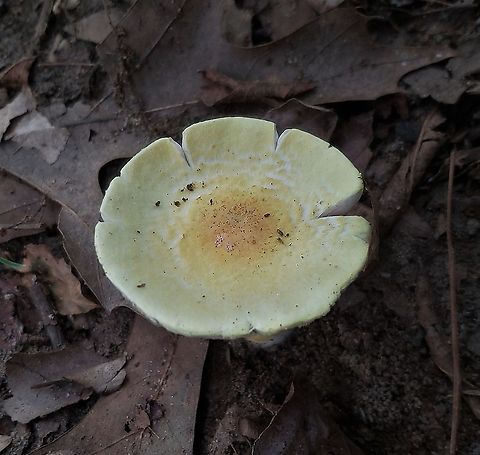
Appearance
Cap: 2.5–6 cm; convex to bell-shaped at first, becoming broadly convex or nearly flat; dry; radially fibrillose and scaly with orangish yellow to yellow scales over a pale yellow surface; the margin not lined, sometimes featuring whitish veil remnants when young, yellowing when rubbed repeatedly.Gills: Free from the stem; close or crowded; short-gills frequent; white when young, becoming dark brown with maturity; covered with a pale yellow partial veil when in the button stage.
Stem: 3–5 cm long; 3–6 mm thick; equal above a slightly swollen base; fibrillose to shaggy; with a thin, collapsing, pale yellow ring; whitish above the ring, yellowish below; yellowing when rubbed; basal mycelium white.
Flesh: White; unchanging when sliced.
Odor and Taste: Not distinctive.
Chemical Reactions: KOH yellow on cap surface and stem base.
Spore Print: Dark brown.
Distribution
Southern Illinois and Ohio; possibly distributed throughout southeastern North AmericaHabitat
Saprobic; growing alone or scattered in hardwood forests; summerReferences:
Some text fragments are auto parsed from Wikipedia.
https://www.mushroomexpert.com/agaricus_auricolor.html